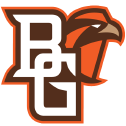What do they do?
Set up and operate digital, letterpress, lithographic, flexographic, gravure, or other printing machines. Includes short-run offset printing presses.
Also known as:
Digital Press Operator, Flexo Press Operator, Flexographic Press Operator, Flexographic Printing Press Operator, Lithographic Press Operator, Offset Press Operator, Offset Pressman, Press Operator, Press Technician, Pressman, Print Press Operator, Printer, Printing Press Operator, Printing Pressman, Sheetfed Press Operator, Typesetter, Web Offset Press Feeder, Web Press Operator
-
-9.3%
Change
Ranks #53 in job growth rate790Job Openings
Ranks #7 in net job growth
-
University of Puerto Rico-Carolina
Carolina, PR
-
Bowling Green State University-Main Campus
Bowling Green, OH
-
Middlesex College
Edison, NJ
-
Pittsburg State University
Pittsburg, KS
-
University of Minnesota Duluth
Duluth, MN
Looking for colleges that offer a specific major? Use the College Match Tool to find your best-matched schools and discover your estimated Net Price!
- Doctorate or Professional Degree (<1%)
- Master's degree (<1%)
- Bachelor's degree (8%)
- Associate's degree (9%)
- Some college, no degree (23%)
- High school diploma equivalent (46%)
- Less than high school diploma (12%)
Most Popular Majors that prepare Printing Press Operators
-
#1
-
Degrees Granted
225
-
Female Students
134
-
Male Students
91
-
Median Starting Salary
$40,500
-
-
#2
-
Degrees Granted
178
-
Female Students
102
-
Male Students
76
-
Median Starting Salary
$40,500
-
-
#3
-
Degrees Granted
66
-
Female Students
41
-
Male Students
25
-
Median Starting Salary
$40,500
-
-
#4
-
Degrees Granted
8
-
Female Students
6
-
Male Students
2
-
Median Starting Salary
$40,500
-
People in this career often know a lot about:
- Mechanical - Knowledge of machines and tools, including their designs, uses, repair, and maintenance.
- Production and Processing - Knowledge of raw materials, production processes, quality control, costs, and other techniques for maximizing the effective manufacture and distribution of goods.
People in this career often have talent in:
- Near Vision - The ability to see details at close range (within a few feet of the observer).
- Control Precision - The ability to quickly and repeatedly adjust the controls of a machine or a vehicle to exact positions.
- Problem Sensitivity - The ability to tell when something is wrong or is likely to go wrong. It does not involve solving the problem, only recognizing that there is a problem.
People in this career often do these activities:
- Inspected printed materials or other images to verify quality.
- Operate photographic developing or print production equipment.
- Read work orders or other instructions to determine product specifications or materials requirements.
- Review blueprints or other instructions to determine operational methods or sequences.
- Adjust equipment controls to regulate flow of production materials or products.
- Evaluate quality of materials or products.
- Collect samples of materials or products for testing.
- Feed materials or products into or through equipment.
- Monitor equipment operation to ensure proper functioning.
- Load materials into production equipment.
- Mount materials or workpieces onto production equipment.
- Download data.
- Clean production equipment.
- Install mechanical components in production equipment.
- Mix ingredients to create specific finishes.
- Program equipment to perform production tasks.
- Enter commands, instructions, or specifications into equipment.
- Lubricate production equipment.
- Direct operational or production activities.
- Record operational or production data.
- Maintain inventories of materials, equipment, or products.
- Order materials, supplies, or equipment.
- Monitor environmental impacts of production or development activities.
- Operate cutting equipment.
This page includes data from:

 Occupation statistics: USDOL U.S. Bureau of Labor Statistics Occupational Employment Statistics
Occupation statistics: USDOL U.S. Bureau of Labor Statistics Occupational Employment Statistics









